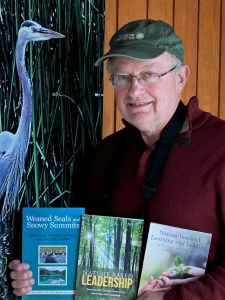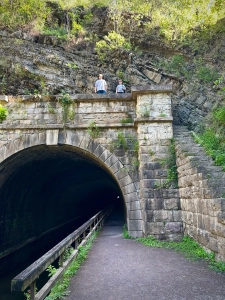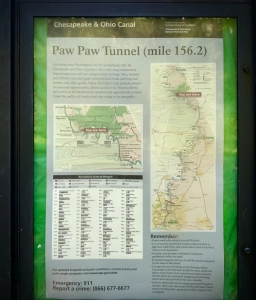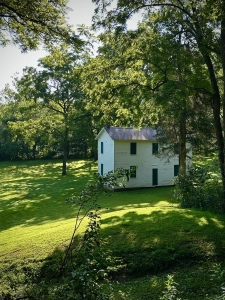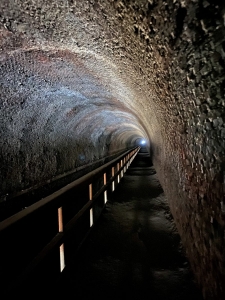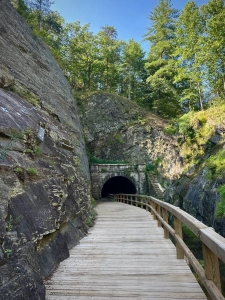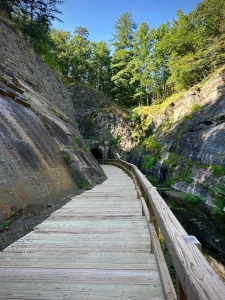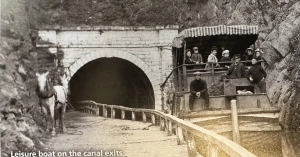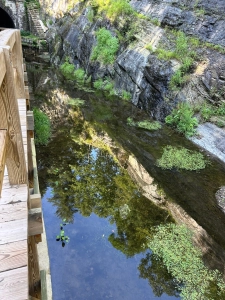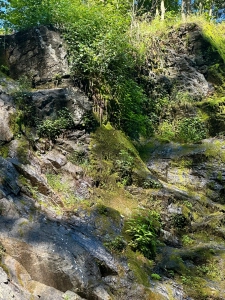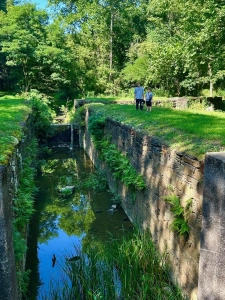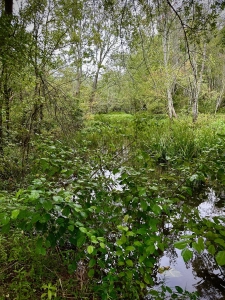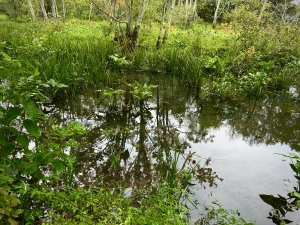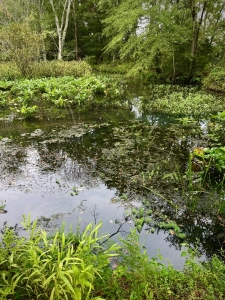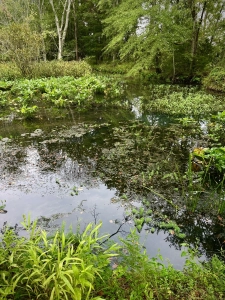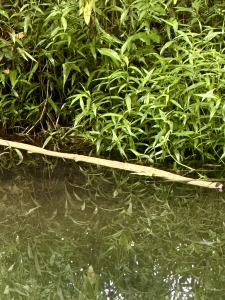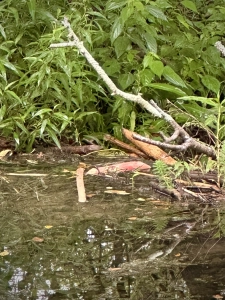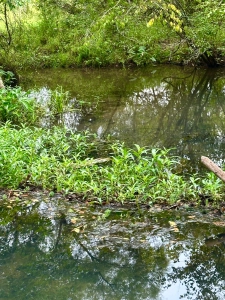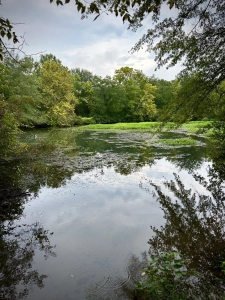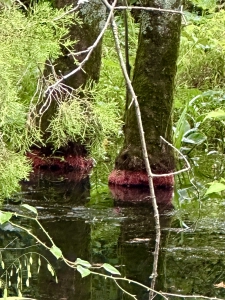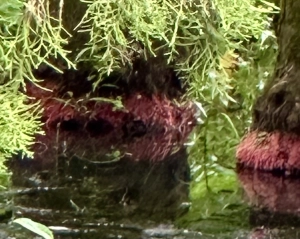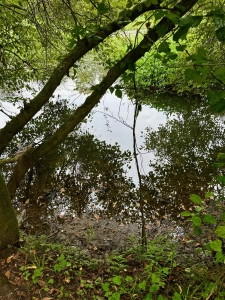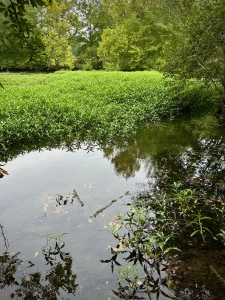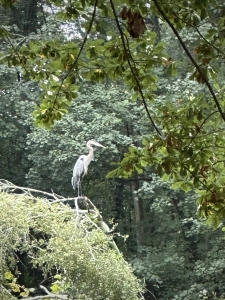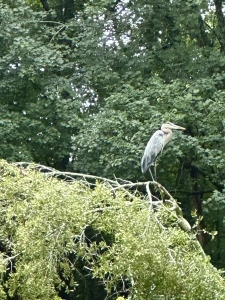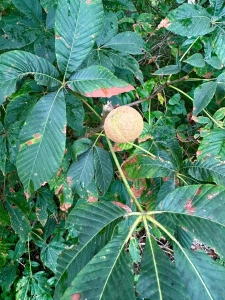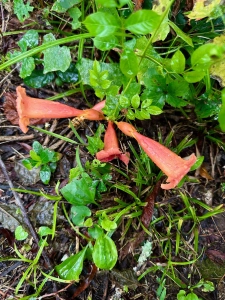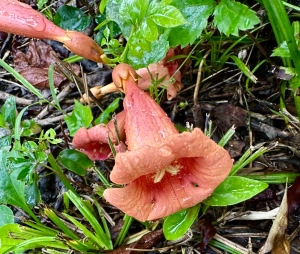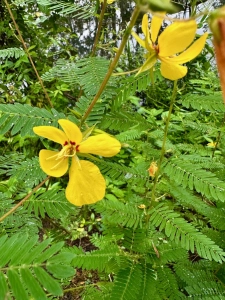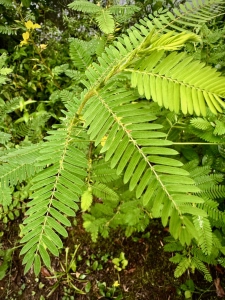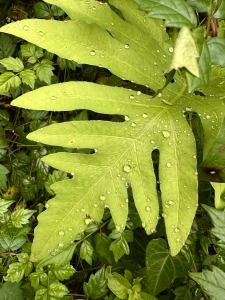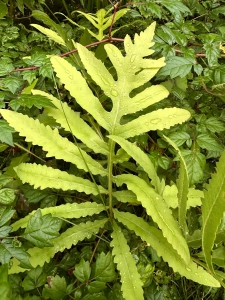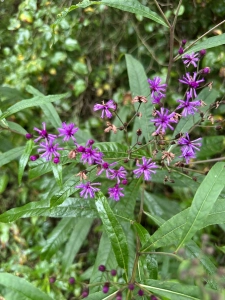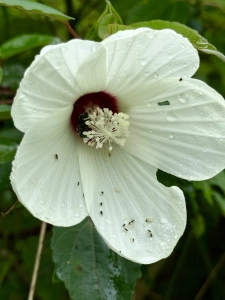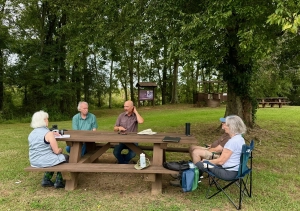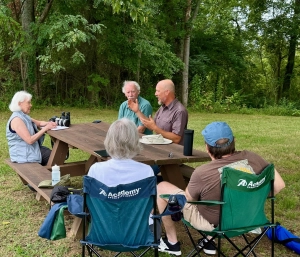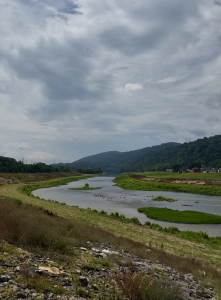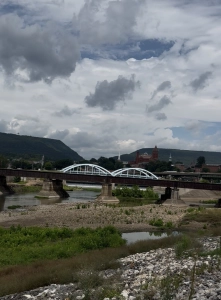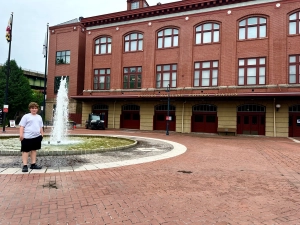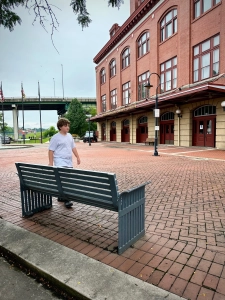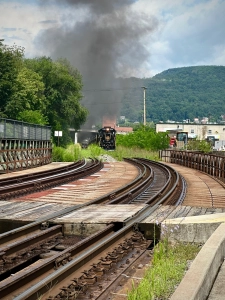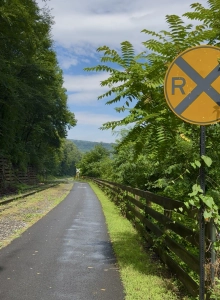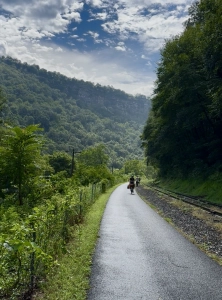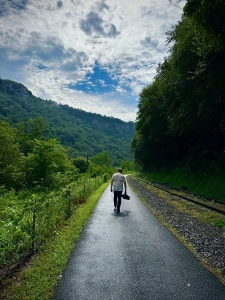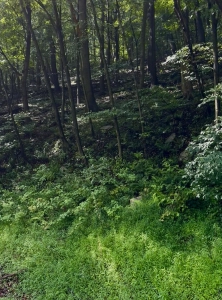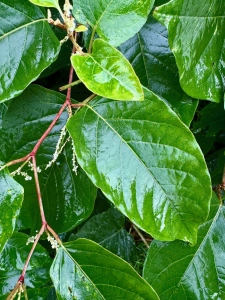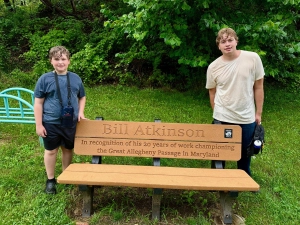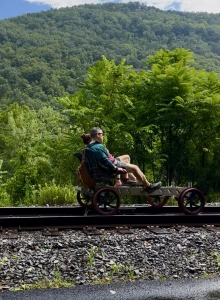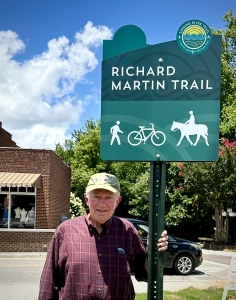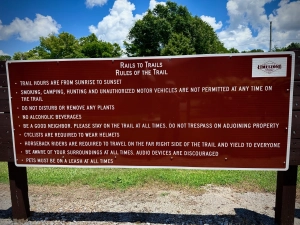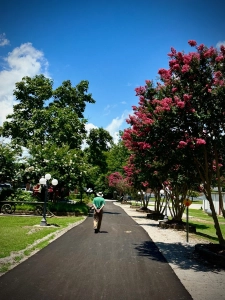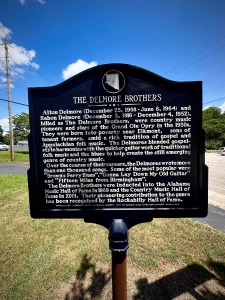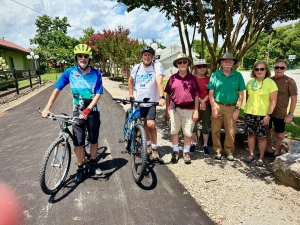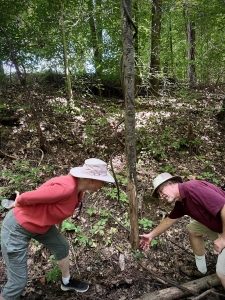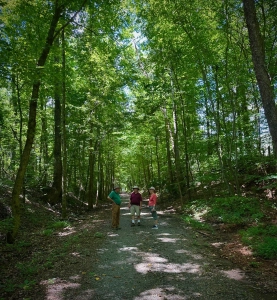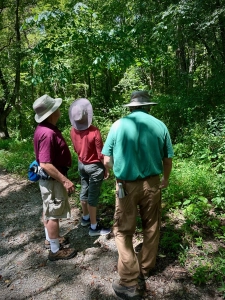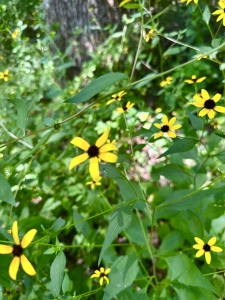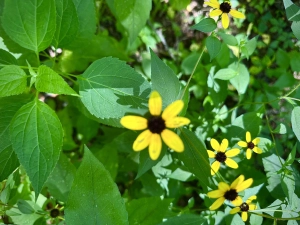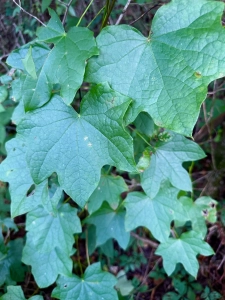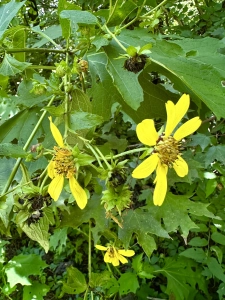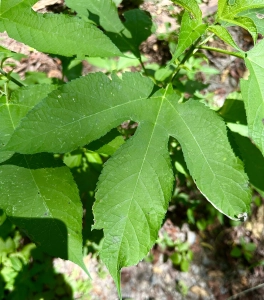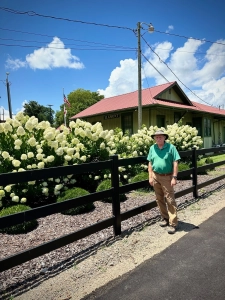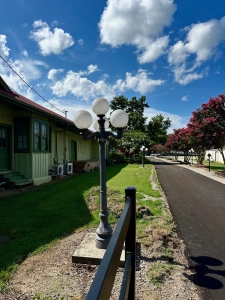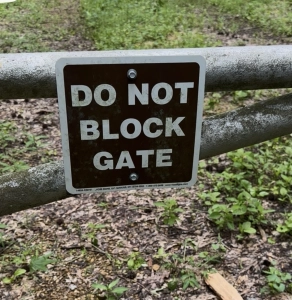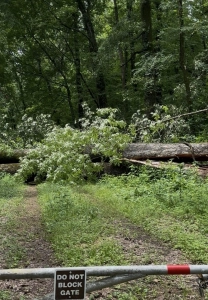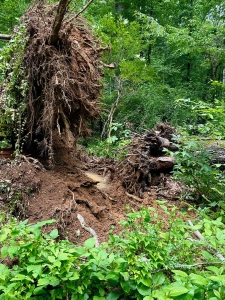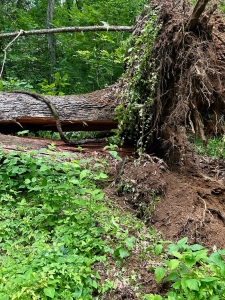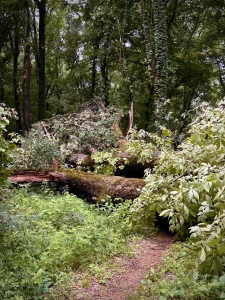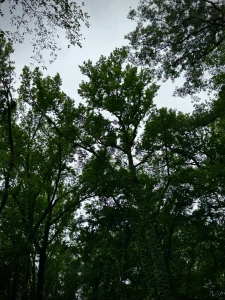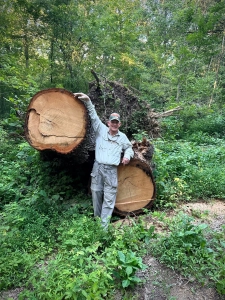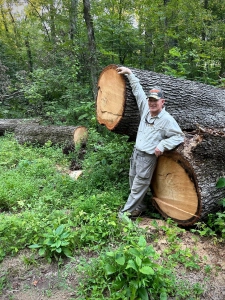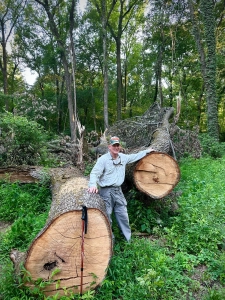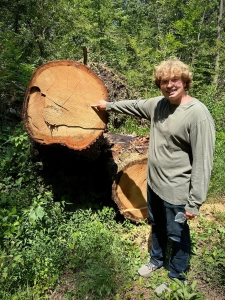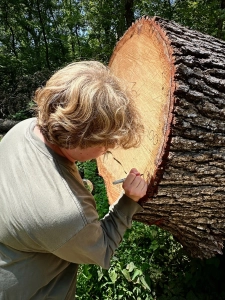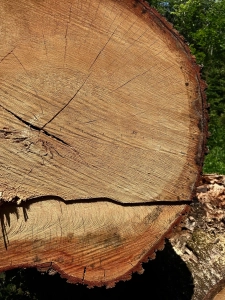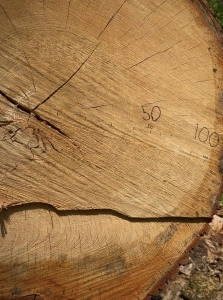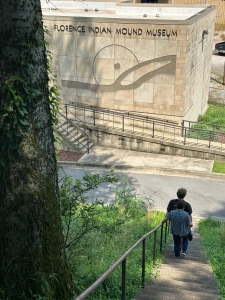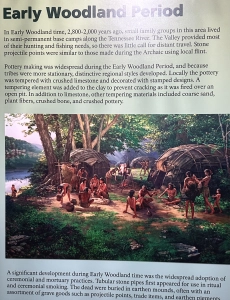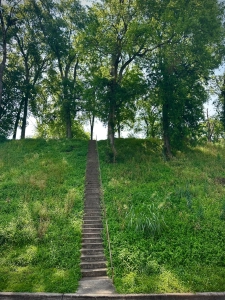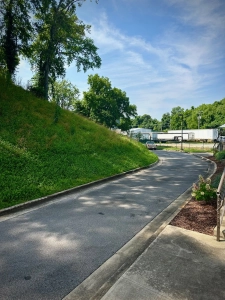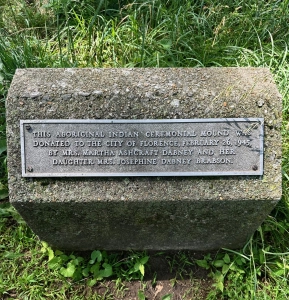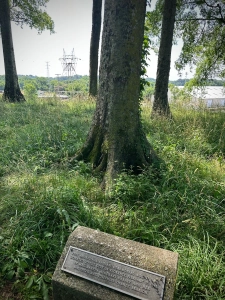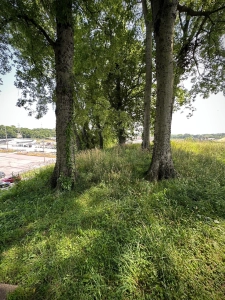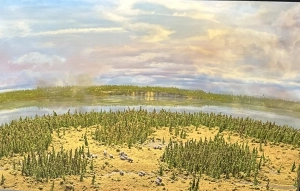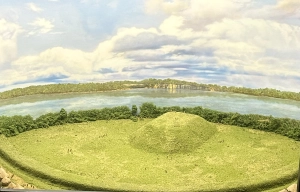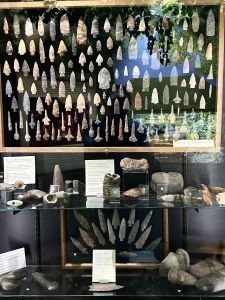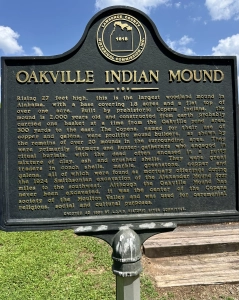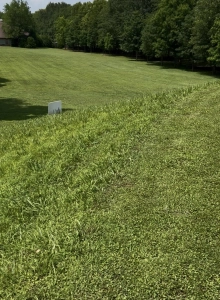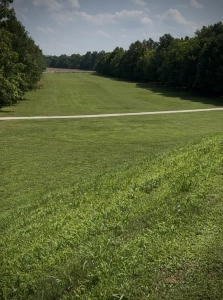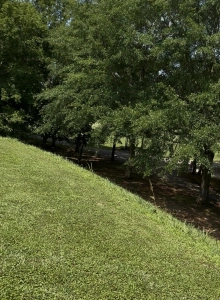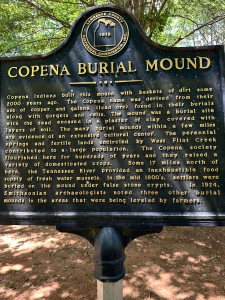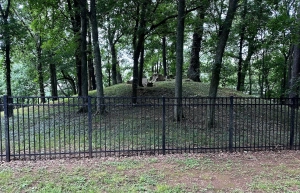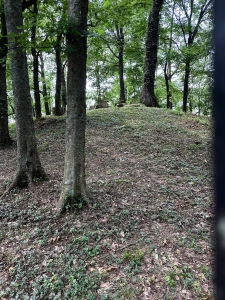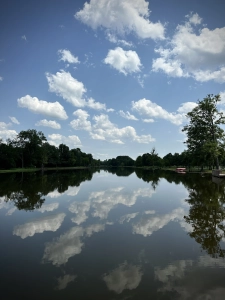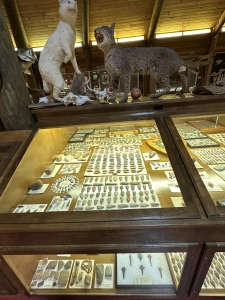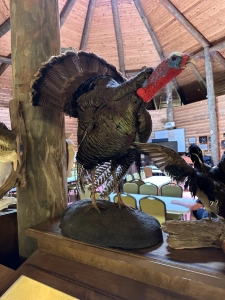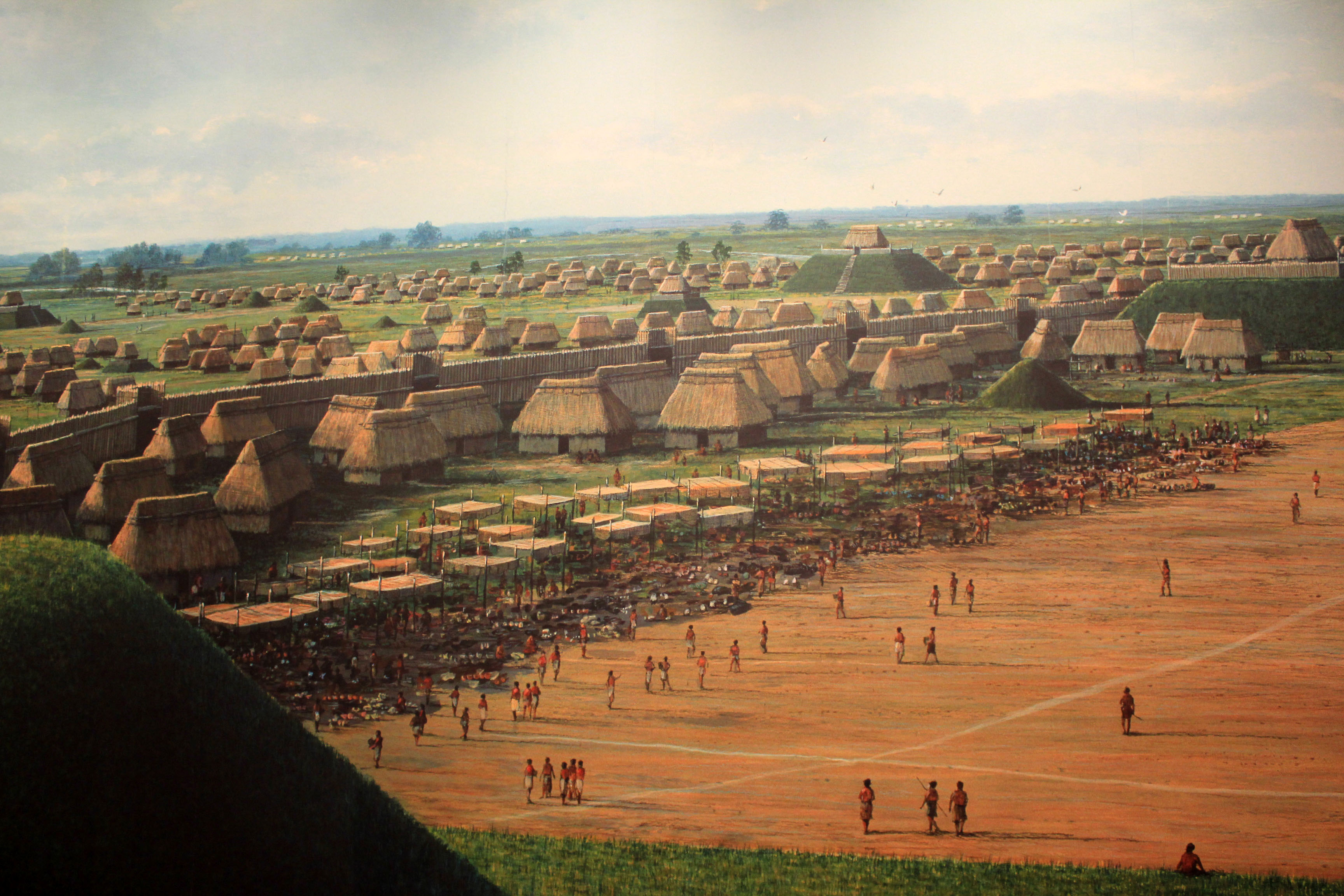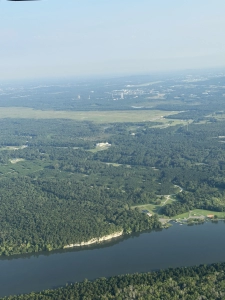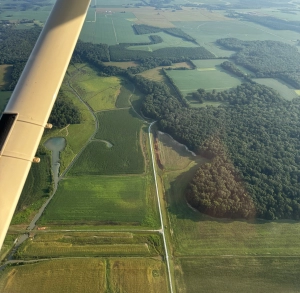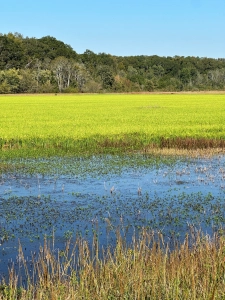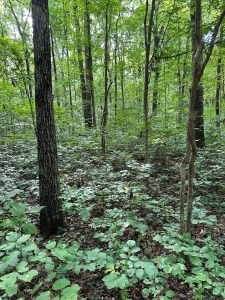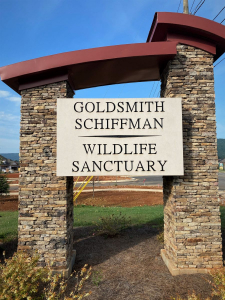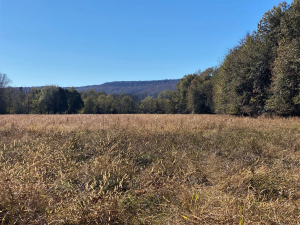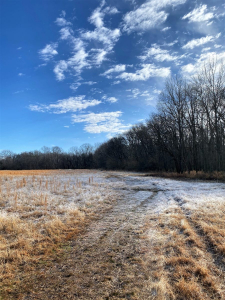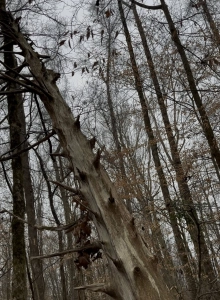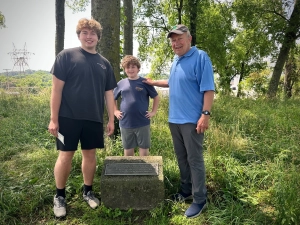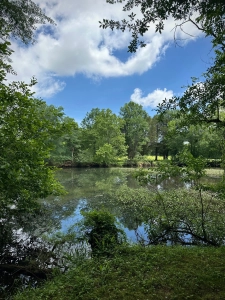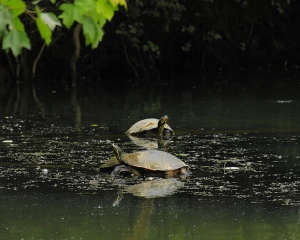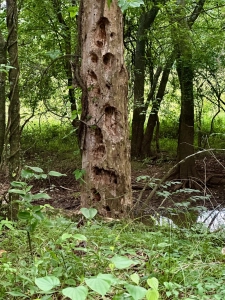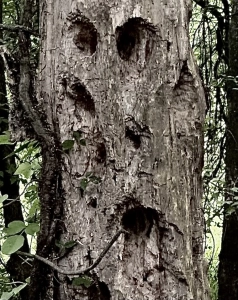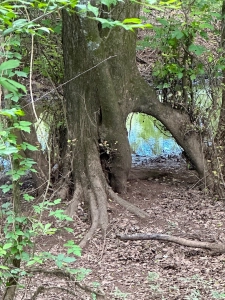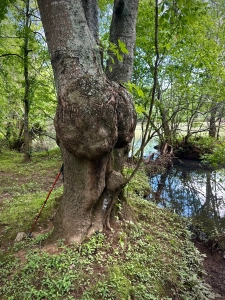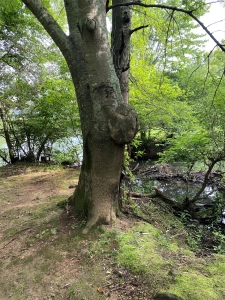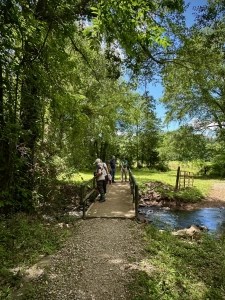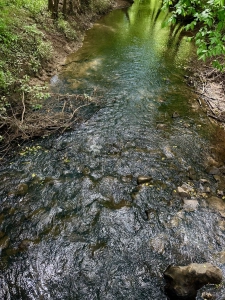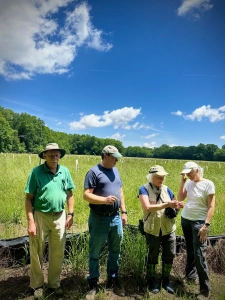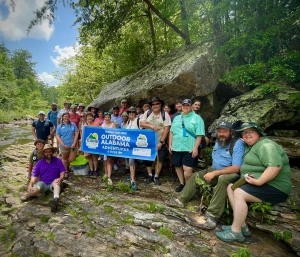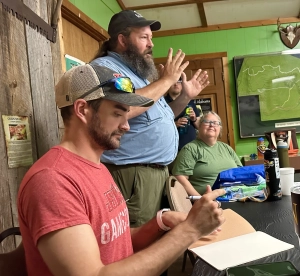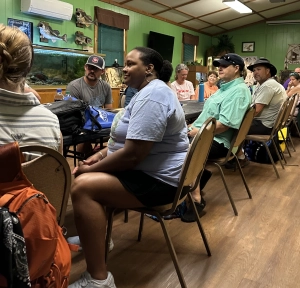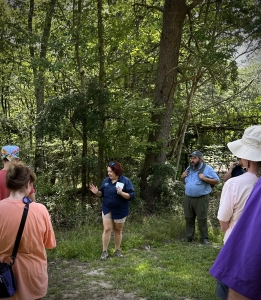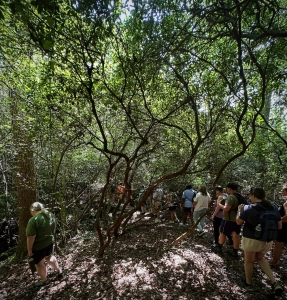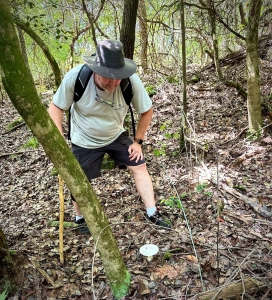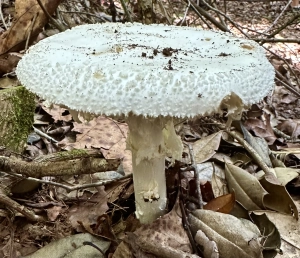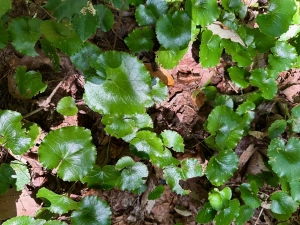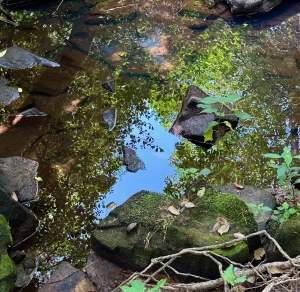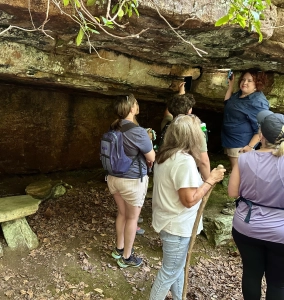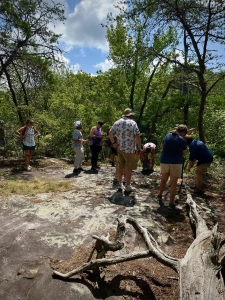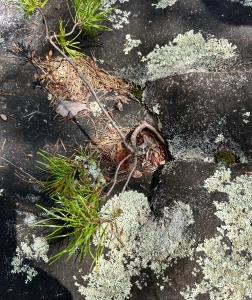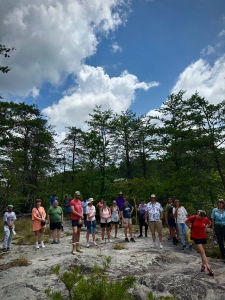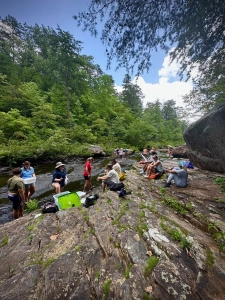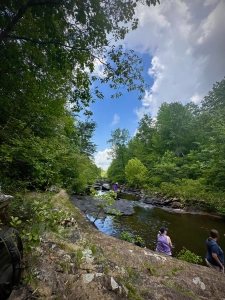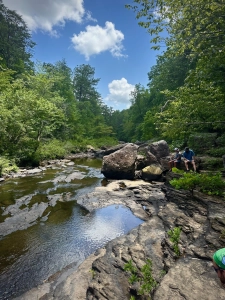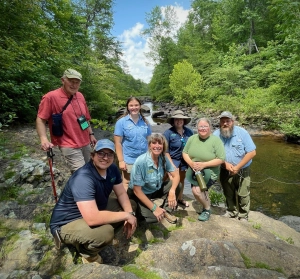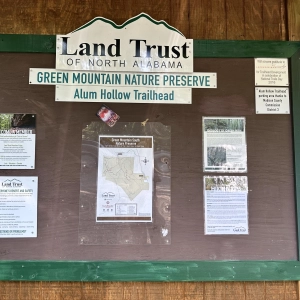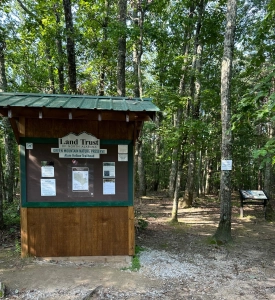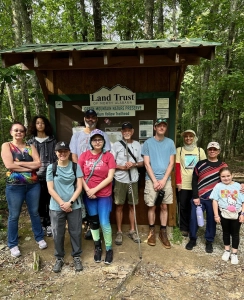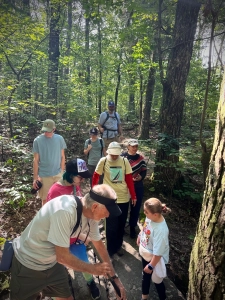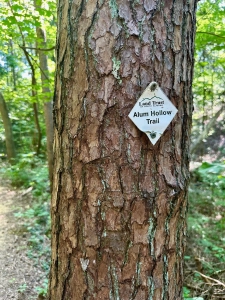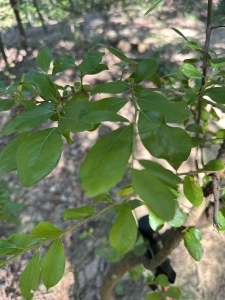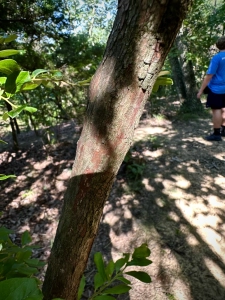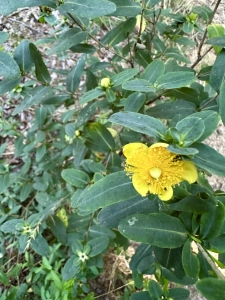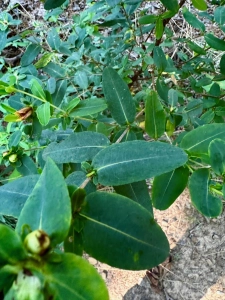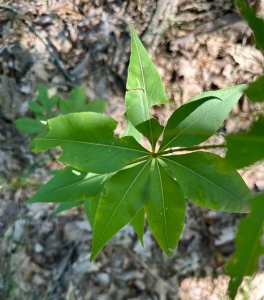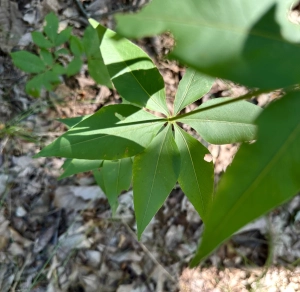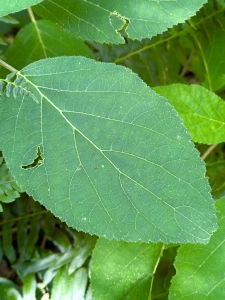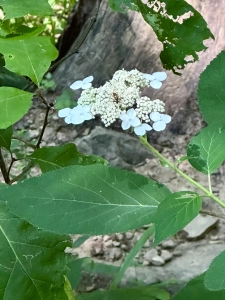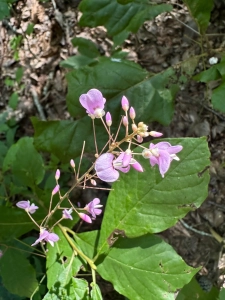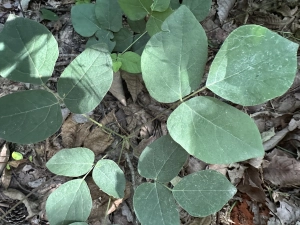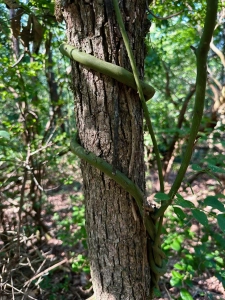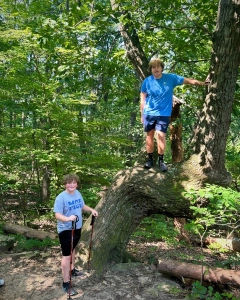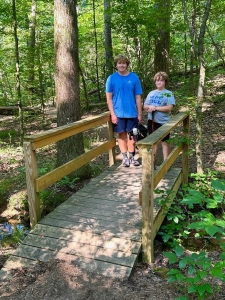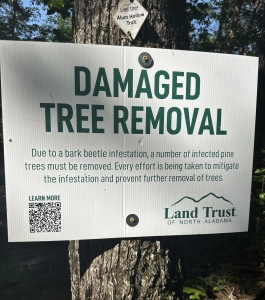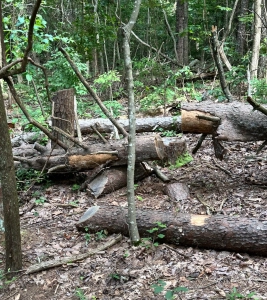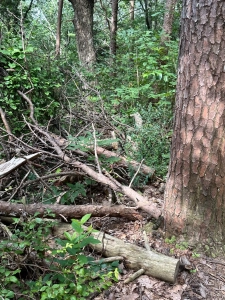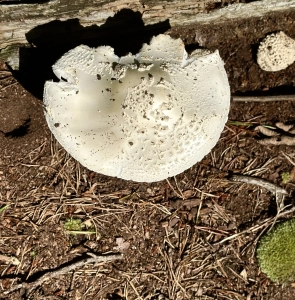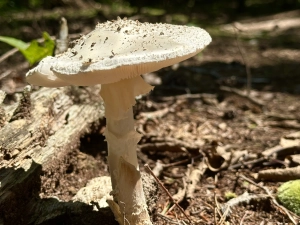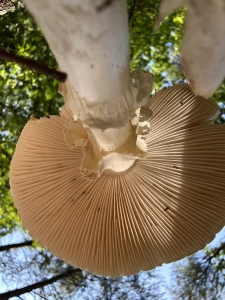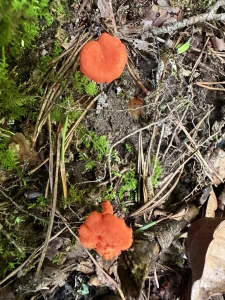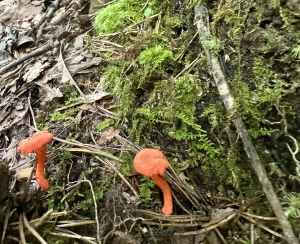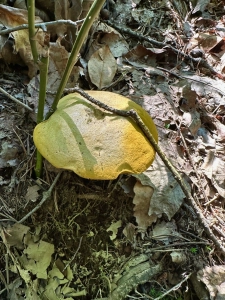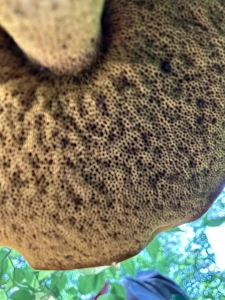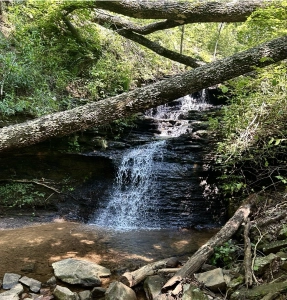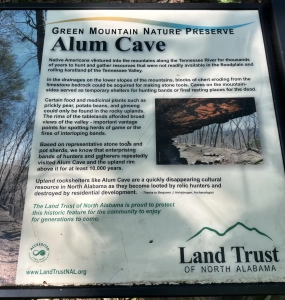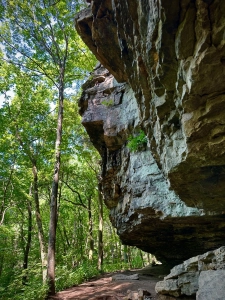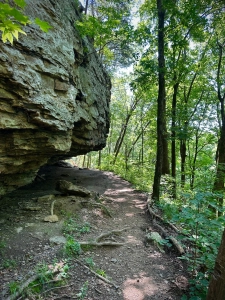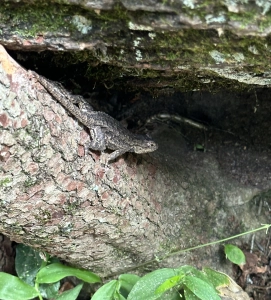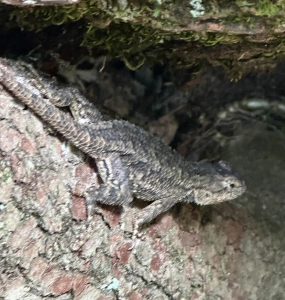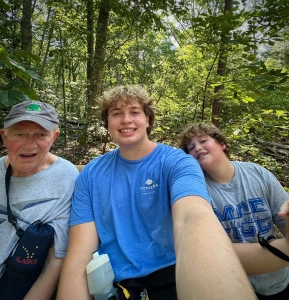Hiking the Homesite Trail at Rocky Gap State Park
On July 29, 2025, my older Alabama grandson, Jack (17), and I hiked the Evitts Homestead Trail on Maryland’s Rocky Gap State Park. We ascended 1,100 feet from Lake Habeeb to Evitts’ 2,200-foot summit. I wanted to share the magic of the place with Jack and rekindle my aging memories. Still in high school, I had explored Rocky Gap Canyon and Evitts Mountain before authorities created the state park and built the dam. We discovered the beauty, magic, wonder, and awe of Nature hidden in plain sight along the trail.
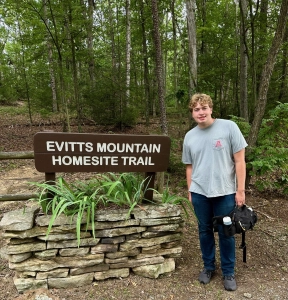
Those youthful excursions are now two generations past. I was about 17; Jack’s age. He is my daughter’s son. Time marches on at 24 hours per day, just as it did 57 years ago, yet its relative pace accelerates. I heard my maternal grandmother say more than once, “The older I get, the faster time passes.” I thought she was old and confused; I now recognize her wisdom.
Ascending the Trail: Moss, Ferns, and Fungi
I recognize another truism: the older I get the more challenging trails become. I hiked this trail five years ago, prior to a series of surgeries: shoulder replacement; triple bypass; bilateral inguinal hernia repair; two total knee replacements; and kidney stone blasting. Add in a minor stroke. It’s no surprise that my recent hike proved tougher. I view summitting Evitts as a major recovery benchmark…and a family milestone. This time next year, Jack will have departed for college and a demanding and rewarding life journey. I pray that he carries the memory of his Evitts hike with Pap into a bright and promising future.
The trail is an old jeep path, rising at a steady rate. I noticed greater erosion and rutting since my 2020 ascent. Park crews are not controlling surface water flow. Instead, runoff is in control, seeking and finding a route with no concern for trail integrity. I saw no recent evidence of constructed water bars, broad-based dips, or other measures to usher overland flow from the trail. Without immediate attention, the trail will degrade beyond easy repair. Ongoing road maintenance cannot be ignored.
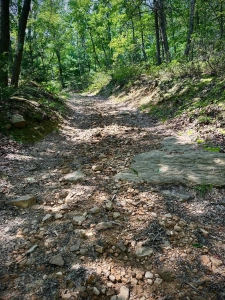
Okay, so much for critiquing park trails and their management. Across my decades of wandering eastern forests, moss is ubiquitous. Pincushion moss embraces tree bases and often covers rocks (right).
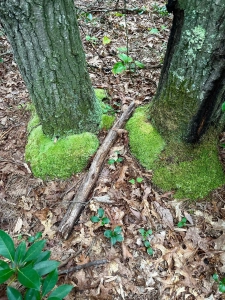
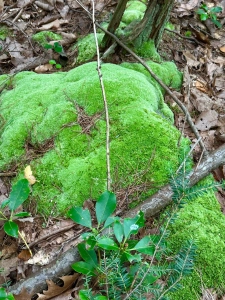
This patch of broom forkmoss welcomed the dappled sunshine penetrating the forest canopy. An online dictionary defines moss as a small flowerless green plant that lacks true roots, growing in damp habitats and reproducing by means of spores released from stalked capsules.
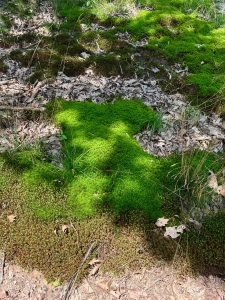
Ample rain during the early summer stimulated prodigous mushroom growth. Mushrooms are the reproductive (spore-producing) structures of common fungi in our eastern foressts. Fungi include tree disease organisms, decomposers, and mycorhizza. Two-colored bolete is a beautiful polypore mycorhizzal fungus, this one with a pink/red umbrella and a smooth cream/yellow undersurface. Although some boletes are choice edibles, I haven’t achieved a necessary level of confidence in distinguishing among the group members. This bolete is symbiotically engaged with oak species.
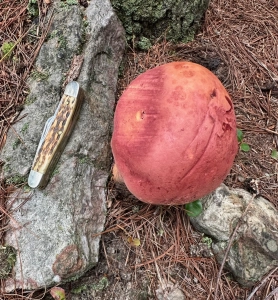
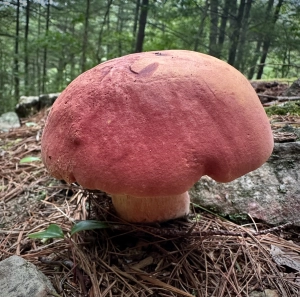
A distinctly polypore underside.

I like the moniker of yellow American blusher, another mycorhizzal fungus associated with oak. this one is gilled. Mushrooms of the Southeast offers an explanation of what prevents me from expanding my culinary foraging to species about which I am not 100 percent certain:
In North America Amanita rubescens has historically been considered edible and relatively distinctive; however, since it is related to some of the most toxic mushrooms, we cannot recommend eating it.
Life in our eastern upland hardwood forests is amazingly complex.
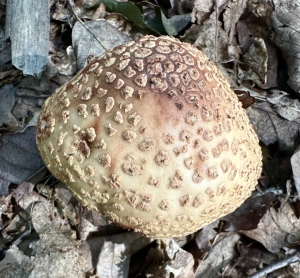
Yellowing rosy ruella, or brittlegills, is a gilled Russula mycorhizza fungus, common in hardwood forests. Considered edible but seldom occurs in numbers sufficient to collect.
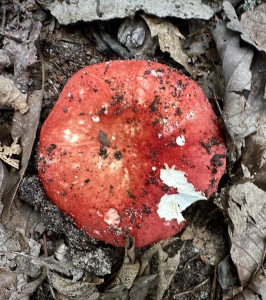
iNaturalist identified these tiny golden mushrooms as clubs and corals, genus Clavulinopsis. Mushrooms of the Southeast steered me to golden fairy club, C. laeticolor, but the book image differed somewhat from my photographs. One reference declared this fungus a mycorhizza; another said that it’s a forest litter decomposer.
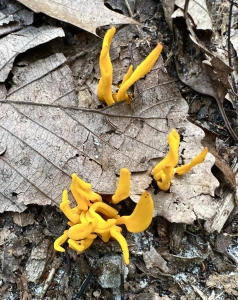
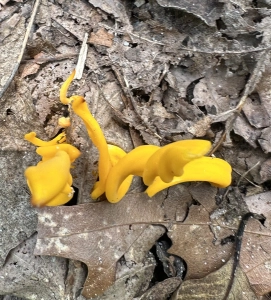
I am a mushroom novice. My fascination with their unique kingdom of life grows with each woodland Nature excursion, where I learn how little I know.
White-pored chicken-of-the-woods (or sulphur shelf) is a decay fungus at home on both living trees, primarily oak, or dead individuals of the same host group. The speices is a choice edible when young and tender, like this one growing at the trail edge.
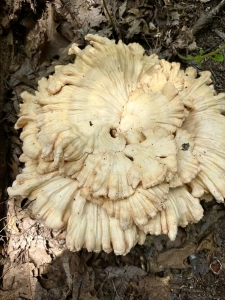
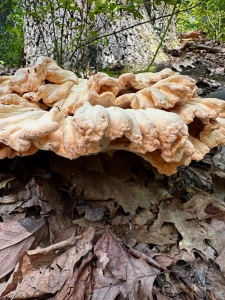
Were I wandering closer to home other than on a state park, where the rule is to take only what you bring, I would have made several meals from this perfect specimen! I wondered how many more flourished within 100 feet of our six-mile circuit.
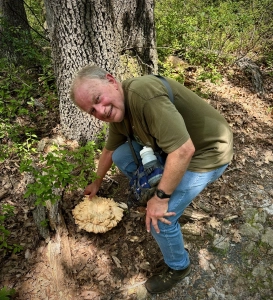
Umbilicaria mammulata, smooth rock tripe, is among the largest lichens in the world. The species forms large sheets (rarely, up to 2′ across), like aged curling leather sheets, on cliffs and boulders. This patch is on a sandstone boulder. The sheets are attached at only a single point (hence the genus Umbilicaria). They are reddish- or grayish-brown on top, and velvety black below.
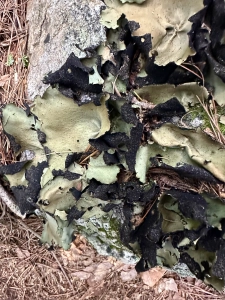
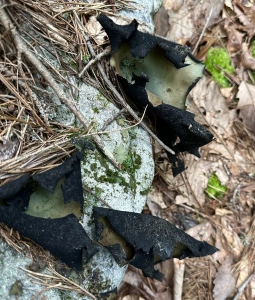
From an online source regarding edibility:
An hour of boiling is said to convert this leather-like lichen into an edible source of protein, palatable by itself or when added to soup or stews. Soak for 2-3 hours first to remove acids that, while not dangerous, may send you running to the bathroom in a hurry. Even after all this soaking and boiling, you’d better be good and hungry—many say it still tastes like shoe leather.
I will not be adding this species to my foraging list!

I recall moist forests in Maryland, Pennsylvania, New York, and New Hampshire, all former woodlands haunts where I’ve rambled, covered with common bracken fern. I noticed only this single specimen.
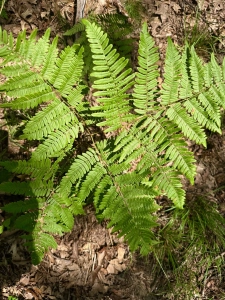
Our journey covered the distance with as much haste as I could muster. I would do it again on a mid-60s-degree October day, devoting hours to extensive study and exploration. Drafting this narrative reminds me to saunter future wanderings with greater attention to full discovery, seeking more than a surficial inventory of what lay hidden in plain sight.
Ascending the Trail: Turtles, Millipedes, Invasive Plants, and Sign-Eating Tree!
An eastern box turtle hurried across the trail. Yes, he moved quickly, not at an exagerated turtle’s pace.
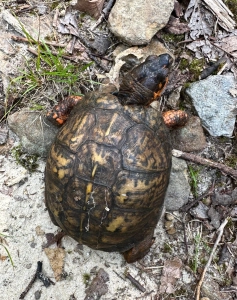
I captured his rapid gate in this 21-second video.
An American giant millipede compelled us to take a closer look.
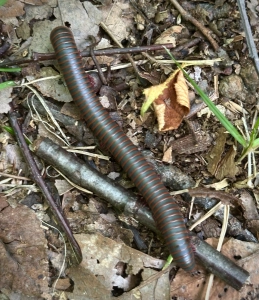
A dense growth of mile-a-mintute-vine infesting at least an acre of forest, stopped me cold.
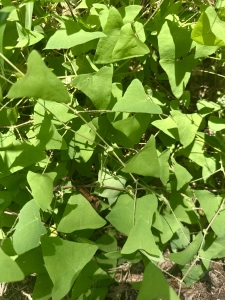
A Penn State Cooperative Extension online resource tells the tale of this aggressive invasive:
Mile-a-minute (Persicaria perfoliata) is a trailing vine with barbed stems and triangular leaves. In contrast to other invasive vines, mile-a-minute is an herbaceous annual, meaning it dies each fall and new plants grow from germinating seeds in the spring. Originally from India and East Asia, this species was first reported in York County, Pennsylvania, in the 1930s in contaminated nursery soil. Mile-a-minute is listed as a “Class B” noxious weed by the State of Pennsylvania, a designation that restricts sale and acknowledges a widespread infestation that cannot feasibly be eradicated. The dense foliage of this invasive weed blankets and slowly suffocates native vegetation, making it extremely destructive and persistent despite being an annual plant.
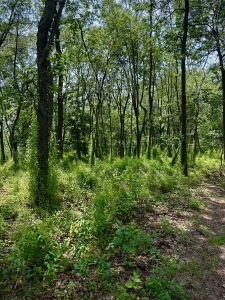
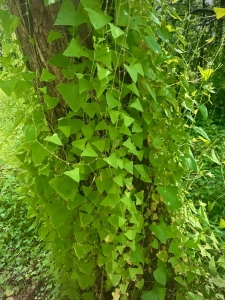
I wondered whether park managers are aware of this infestation. When we returned to the Lake Habeeb dam I told a maintenance worker of our discovery. He seemed concerned. Enough to take action?
I always remain alert for tree form oddities and curiosities, including sign-consuming black cherry trees!
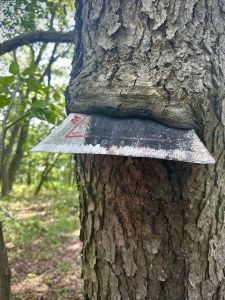
I love the Central Appalachian forests of my childhood and early professional days. Rocky Gap State Park drew memories, warm and fuzzy, from more than five decades ago. At age 74, I can say with confidence and satisfaction that those were the good old days…and that blessedly these, too, are the good old days. Life was…and is…good!
Thoughts and Reflections
I revisited my October 10/15/20 post from the prior Evitts Mountain ascent: https://stevejonesgbh.com/2020/10/15/a-tough-hike-and-deep-reward-at-rocky-gap-state-park-in-western-maryland/
I offered three lessons from my late September, 2020, solitary trek:
- The extraordinary Nature of place is indelibly written in my head, heart, mind, body, and soul. I am a creature and product of place… place defined by Nature.
- Countless days in Nature define my life across these 69 years — I look, see, and feel Nature’s beauty, magic, wonder, and awe… and find immeasurable lift.
- My connection to Nature is unmistakably SACRED!
Today, five years later, I would modify only minimally: My connection (across these 74 years) to Nature (and Family) is unmistakably SACRED!
Inhale and absorb Nature’s elixir. May Nature Inspire, Inform, and Reward you!
Note: All blog post images created & photographed by Stephen B. Jones unless otherwise noted. Please circulate images with photo credit: “©2025 Steve Jones, Great Blue Heron LLC. All Rights Reserved.”
I am available for Nature-Inspired Speaking, Writing, and Consulting — contact me at steve.jones.0524@gmail.com
Reminder of my Personal and Professional Purpose, Passion, and Cause
If only more of us viewed our precious environment through the filters I employ. If only my mission and vision could be multiplied untold orders of magnitude:
Mission: Employ writing and speaking to educate, inspire, and enable readers and listeners to understand, appreciate, and enjoy Nature… and accept and practice Earth Stewardship.
Vision:
- People of all ages will pay greater attention to and engage more regularly with Nature… and will accept and practice informed and responsible Earth Stewardship.
- They will see their relationship to our natural world with new eyes… and will understand more clearly their Earth home.
Tagline/Motto: Steve (Great Blue Heron) encourages and seeks a better tomorrow through Nature-Inspired Living!
Steve’s Four Books
I wrote my books Nature Based Leadership (2016), Nature-Inspired Learning and Leading (2017), Weaned Seals and Snowy Summits: Stories of Passion for Place and Everyday Nature (2019; co-authored with Dr. Jennifer Wilhoit), and Dutton Land & Cattle: A Land Legacy Story (2023) to encourage all citizens to recognize and appreciate that every lesson for living, learning, serving, and leading is either written indelibly in or is powerfully inspired by Nature. All four of my books present compilations of personal experiences expressing my deep passion for Nature. All four books offer observations and reflections on my relationship with the natural world… and the broader implications for society. Order any from your local indie bookstore, or find them on IndieBound or other online sources such as Amazon and LifeRich.
I began writing books and Posts for several reasons:
- I love hiking and exploring Nature
- I see images I want to (and do) capture with my trusty iPhone camera
- I enjoy explaining those images — an educator at heart
- I don’t play golf!
- I do love writing — it’s the hobby I never needed when my career consumed me
- Judy suggested my writing is in large measure my legacy to our two kids, our five grandkids, and all the unborn generations beyond
- And finally, perhaps my books and Blogs could reach beyond family and touch a few other lives… sow some seeds for the future
